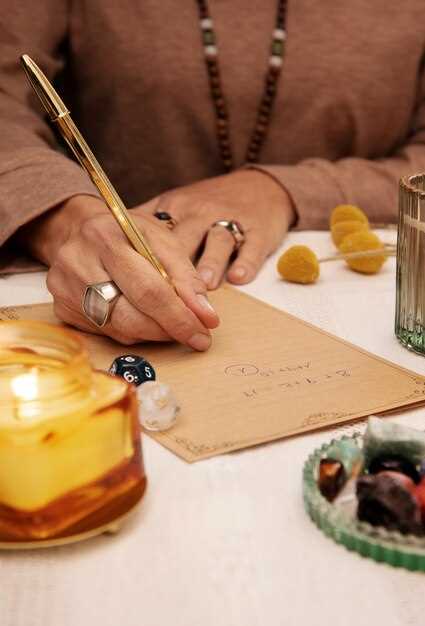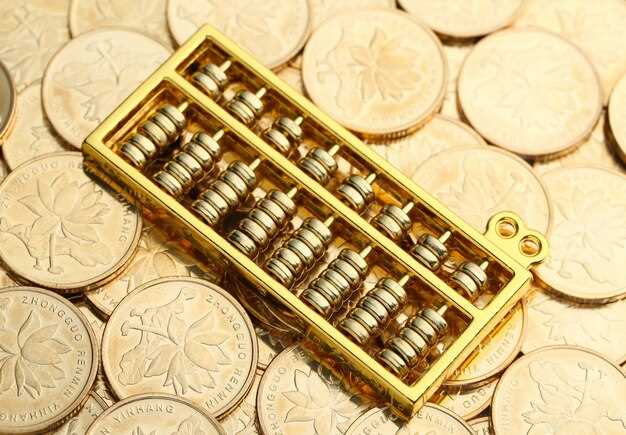Begin your search for the perfect vintage Art Deco ring by concentrating on the distinct geometric designs and bold colors that define this era. Art Deco jewelry, particularly rings, are celebrated for their intricate craftsmanship and luxurious materials. To ensure you’re acquiring an authentic piece, prioritize assessing the specific characteristics such as the symmetry in design and the use of stark contrasts, often with white metals like platinum or white gold.
The hallmark of any vintage Art Deco ring is its attention to detail. Carefully examine the ring for any signs of authenticity, such as a hallmark or maker’s mark, which signifies the piece’s origin and authenticity. It’s essential to scrutinize the gemstones for cut and clarity, as emeralds, sapphires, and rubies were popular choices during the Art Deco period, typically set in sophisticated and innovative styles.
When purchasing a vintage item, be mindful of the piece’s condition. Look for any visible signs of wear or repair work, as these can impact the ring’s value and integrity. Consult with a certified appraiser to evaluate the ring’s historical significance and current market worth. Their expertise will guide you in making a well-informed decision, ensuring that your investment holds both aesthetic and financial value.
Consider the source of your purchase. Opt for renowned dealers and establishments with a proven track record in dealing with vintage jewelry. This provides an added layer of assurance that you are buying a genuine Art Deco piece. Additionally, requesting certificates of authenticity and detailed provenance can help verify the ring’s history, providing peace of mind with your acquisition.
Key Characteristics of Vintage Art Deco Rings

Consider tracking the symmetry and geometry–hallmarks of the Art Deco era. Look for bold, angular designs and clean lines that echo the architectural innovations of the 1920s and 1930s. Geometric shapes such as rectangles, triangles, and linear patterns often characterize the settings and profiles of these rings.
When inspecting gemstones, prioritize those with vibrant colors and unique cuts that were popular during the time. Diamonds typically feature step cuts like baguettes or emeralds, which enhance the linear design ethos. Colored gemstones such as sapphires, emeralds, rubies, and onyx frequently appear, adding a contrast of color in striking juxtaposition.
The choice of metal is another distinctive trait. Platinum dominated the Art Deco period due to its strength and ability to hold intricate designs, though white gold and silver also feature prominently. Check for delicate filigree work and engraving, as these intricate details highlight the craftsmanship synonymous with the era.
- Ensure authenticity by looking for hallmarks that indicate the ring’s origin and maker, a practice common at the time.
- Inspect the setting carefully. Art Deco rings often incorporate multiple smaller stones set into elaborate patterns, so verify the security of each stone.
- Be aware of wear and tear that might require restoration, especially with older rings, to preserve their original aesthetic integrity.
Knowing these characteristics will guide you to select truly representative pieces of the Art Deco period while ensuring their historical and artistic value. Prioritize craftsmanship and design over trends to acquire a timeless addition to your collection.
Identifying Authentic Art Deco Design Elements

Examine the geometric shapes synonymous with Art Deco. Authentic rings from this era often feature symmetrical patterns, including chevrons, zigzags, and trapezoids. Look for sharp, angular designs that capture the boldness typical of the 1920s and 1930s.
Inspect the materials used. Original Art Deco rings frequently incorporate white metals like platinum or white gold, often complemented by vibrant gemstones such as emeralds, sapphires, and rubies. The use of hard stones like onyx, jade, and lapis lazuli can also indicate authenticity.
Consider the craftsmanship. Authentic pieces exhibit meticulous attention to detail with precise cuts and intricate metalwork. Pay attention to filigree work and millegrain detailing, as these are hallmarks of superior craftsmanship in Art Deco jewelry.
Spot distinguishing motifs and themes. Common themes in genuine Art Deco design include ancient Egyptian, Asian, and African influences. Additionally, floral motifs and sunbursts reflect the era’s fascination with exoticism and nature.
Verify the hallmarking. Check for clear maker’s marks or stamps inside the band of the ring, which can offer insights into its origin and confirm its authenticity. Ensure these hallmarks correspond with Art Deco periods and styles.
| Design Element | Description |
|---|---|
| Geometric Shapes | Chevrons, zigzags, trapezoids; bold, angular designs |
| Materials | Platinum, white gold; gemstones like sapphires, emeralds |
| Craftsmanship | Intricate metalwork, filigree, millegrain detailing |
| Motifs and Themes | Egyptian, Asian, African influences; floral, sunbursts |
| Hallmarking | Maker’s marks or stamps indicating origin |
Materials and Gemstones Commonly Used
Explore vintage Art Deco rings crafted from platinum or white gold, as these metals were highly favored during the period for their durability and sleek appearance. Ensure the metal quality is confirmed with proper hallmarks or assay marks, indicating authenticity and composition.
Diamonds often feature in Art Deco rings, with cuts such as the baguette and emerald bringing a geometric flair. Check for clarity and color, as these factors directly impact the gem’s value and brilliance. Also, consider rings with sapphires, emeralds, and rubies – these bold-colored stones complement the era’s love for striking contrasts.
Explore unique options incorporating onyx, jade, or coral, providing an exquisite touch of color and texture. These stones not only enhance aesthetic appeal but also reflect the diversity and innovation characteristic of the Art Deco style. Verify the gemstone’s authenticity by consulting with a reputable appraiser, particularly for rare pieces.
Avoid rings with replacements or excessive repairs, as these could diminish the piece’s historical significance. Educate yourself about the care required for each material and gemstone to maintain their beauty over time. With the right choice, an Art Deco ring remains a timeless treasure in any collection.
Common Hallmarks and Signatures to Look For
Always inspect the inside of the ring’s band for any markings. Hallmarks typically indicate the metal’s purity, with common marks like “18K” or “750” denoting 18-karat gold. Silver rings might have a “925” stamp, indicating sterling silver. An absence of these marks could suggest a reproduction or an alternative material.
Signatures are also crucial when verifying authenticity. Many Art Deco rings were crafted by renowned brands or designers whose marks are sought-after by collectors. Look for names or initials engraved inside the band. Prominent designers like Cartier or Tiffany & Co. often included their logo or signature. A clear and undisturbed signature usually points towards authenticity.
Consider also looking for country of origin marks; these can add historical value. Rings crafted in France may feature an eagle head mark for gold, while British pieces often bear a lion mark for sterling silver. These marks reflect the manufacturing country and can help pinpoint the epoch of the piece.
If you encounter unknown symbols or numbers, consult a jewelry hallmark compendium or seek expertise from a gemologist. Recognizing and understanding hallmarks and signatures not only confirms the ring’s authenticity but also provides insight into its heritage and craftsmanship.
Practical Buying Tips for Art Deco Rings

Research and verify the authenticity of the ring by checking hallmarks and stamps, which can often indicate the era or designer. Seek documentation like provenance or appraisals, especially when purchasing from a dealer. Understanding the common materials of the era, such as platinum and white gold, helps confirm authenticity. Compare the geometric designs and craftsmanship to recognized Art Deco motifs, ensuring the intricate detailing is consistent with the period.
Examine the gemstones under magnification for any signs of wear or damage, as vintage rings may have endured repairs over time. Pay attention to symmetry in gemstone cuts, a signature of the Art Deco style, and opt for pieces with original stones where possible. Evaluate the setting’s overall condition, looking for loose prongs or discoloration, which might require restoration.
Budget realistically by including potential restoration or maintenance costs, and consider obtaining an insurance appraisal for valuable pieces. Attend reputable auctions or consult with specialists in vintage jewelry who can offer insights into market trends and rarity. When purchasing online, ensure the retailer provides high-quality images and offers a return policy. This flexibility is vital for assessing the ring’s fit and appearance in person.
Stay informed about current market values by reviewing past auction results and consulting price guides specializing in vintage jewelry. Networking with collectors and attending gem shows can provide additional context and comparative pricing information. Prioritize education to avoid overpaying and secure a piece that aligns with both personal style and investment goals.
Researching Reputable Dealers and Sources
Seek out dealers with a solid track record in vintage jewelry. Check online reviews and ratings on platforms like Trustpilot or Yelp. Engage with collector communities or forums for personal recommendations, as these groups often share insights into trusted dealers. Additionally, verify the dealer’s membership in professional organizations such as the Jewelers of America or the National Association of Jewelry Appraisers, as these affiliations signify commitment to ethical practices.
Visit brick-and-mortar stores that specialize in antique jewelry if possible. This allows you to examine rings in person, ensuring authenticity and quality before making a purchase. Inquire about the provenance of each piece; reputable dealers willingly provide documentation or detailed history for their items.
Online marketplaces like Ruby Lane or 1stdibs offer curated selections from vetted dealers, providing an additional layer of security. Pay attention to return policies and guarantees; these are often signs of a dealer’s confidence in their products. Remember to explore auction houses known for antiques, such as Sotheby’s or Christie’s, which frequently feature Art Deco rings with verified authenticity.
Develop relationships with multiple dealers to broaden your understanding of pricing and availability. Dealers appreciate informed clients and may offer insights or special finds to those who demonstrate genuine interest and knowledge. By doing your homework, you ensure a satisfying and secure purchase experience.
Assessing the Condition and Quality of Rings
Diligently examine the ring for any visible damage, such as scratches or cracks. Pay special attention to the setting, ensuring the stones are securely fastened. Loose stones can signify wear or poor craftsmanship. Check the band for signs of thinning, which indicates extensive wear and may compromise the ring’s durability.
Use a magnifying loupe to spot imperfections that are not visible to the naked eye. This tool helps in identifying issues like small stone chips or subtle band warps. Ensuring structural integrity is key to a valuable purchase.
Evaluate the quality of the materials. Rings from the Art Deco era typically feature platinum or high-carat gold, which offers clues to a ring’s authenticity and potential value. Assess the metal for tarnish or wear that could affect the ring’s appearance and longevity.
Verify the quality and authenticity of gemstones by examining their color, cut, and clarity. Art Deco rings often showcase vivid colors and geometric cuts. Ensure that the stones are not replacements, commonly found in vintage pieces, by checking for uniformity in stone wear and age.
| Aspect | What to Look For |
|---|---|
| Setting | Secure stones, no loose settings |
| Band | No thinning or major scratches |
| Material | Platinum or high-carat gold |
| Gemstones | Vivid colors, authentic, no replacements |
Secure a certificate of authenticity, particularly if the ring features significant gemstones. This documentation is invaluable for both assurance and potential resale value, establishing the ring’s provenance and confirming its details.
Determining Fair Market Value and Pricing
Ensure you’re getting a fair deal by researching comparable ring prices from reputable sources such as auction houses, antique jewelry shops, and online platforms specializing in vintage pieces.
- Analyze recent auction results for Art Deco rings with similar characteristics. Auction houses often provide in-depth descriptions and results that can serve as reliable benchmarks.
- Consult academic or industry publications that outline price trends specific to vintage jewelry, which can offer insights to help estimate a ring’s current market value.
- Seek valuations from certified appraisers with expertise in period jewelry. Their evaluation will consider the ring’s materials, craftsmanship, provenance, and current market conditions.
- Compare listings on specialized online marketplaces, checking seller reputations and reviews, to gauge competitive pricing in the market.
- Examine the ring’s condition meticulously; wear and restoration can significantly influence its value and pricing.
- Account for any unique attributes like the maker’s mark, rarity of design, or historical significance, as these features can command premium pricing.
Engage in discussions with collectors or join vintage jewelry forums to exchange insights about pricing and valuation for similar Art Deco rings. Establishing connections with knowledgeable enthusiasts can provide you with invaluable perspectives on determining fair value and pricing.
Understanding Restoration and Maintenance Needs
Pay close attention to the condition of the ring. Determine if the piece requires any restoration. Look for visible signs of wear, such as missing stones, loose settings, or significant scratches on the metal. If restoration is needed, consult with a jeweler who specializes in vintage Art Deco pieces to preserve its historical value.
- Check the prongs and settings: Ensure the stones are securely held in place. Over time, prongs can wear down, increasing the risk of stones getting lost.
- Inspect the metal: Art Deco rings often use platinum or white gold. Identify any tarnishing or discoloration that may require professional cleaning.
- Stone condition: Examine gemstones and diamonds for chips or cracks. Stones in vintage pieces might reveal age, affecting their integrity.
- Evaluate previous repairs: Look for signs of past restoration which may impact the ring’s value. Unsuitable materials or methods can reduce authenticity.
Regular maintenance keeps your ring looking its best. Clean the piece gently with a soft brush and soapy water, avoiding harsh chemicals. Store it safely in a soft pouch when not worn. For intensive cleaning, consider professional services to avoid damage.
Questions to Ask Before Making a Purchase
Verify the authenticity of the ring by asking for documentation or a certificate from a recognized gemological institute. Confirm the age of the piece; a true Art Deco ring should originate from the 1920s to the 1940s. Ask about the materials used, ensuring they align with the period’s characteristic use of platinum, yellow gold, or white gold.
Inspect the gemstones carefully. Inquire whether they are original to the ring or replacements, and request information on any enhancements or treatments they may have undergone. Check the condition of the ring, paying attention to settings, prongs, and signs of wear, which can impact both aesthetics and value.
Provenance can add significant value, so ask if there is any documented history of the ring’s ownership. This can provide insight into its uniqueness and historical significance. Discuss the return policy and ensure there is a fair period for professional appraisal after the purchase.
Finally, inquire about the seller’s reputation and experience in dealing with vintage jewelry. A trustworthy dealer should be transparent and eager to provide all necessary information and answer any questions you may have about their collection.
Q&A:

What are the key characteristics of Art Deco rings that differentiate them from other vintage styles?
Art Deco rings are known for their bold geometric designs and symmetrical patterns. They often feature contrasting colors and incorporate materials such as platinum, white gold, and various gemstones like emeralds, sapphires, and diamonds. The craftsmanship is distinctive, with a focus on intricate details and a glamorous aesthetic that sets them apart from other vintage styles.
How can I verify the authenticity of a vintage Art Deco ring before purchasing?
To authenticate a vintage Art Deco ring, consider consulting a professional appraiser or gemologist. Check for hallmark stamps indicating precious metal content, and examine the ring’s craftsmanship and design details for consistency with Art Deco characteristics. Also, request any available provenance or documentation from the seller.
Are there particular gemstones that are more commonly used in Art Deco rings?
Yes, certain gemstones were particularly favored in Art Deco rings. Diamonds, especially baguette and round cuts, are frequently used. Colored stones such as sapphires, rubies, and emeralds were also popular, often used in contrasting patterns to enhance the ring’s aesthetic appeal.
What should I consider regarding the condition of a vintage Art Deco ring when buying?
When assessing the condition of a vintage Art Deco ring, inspect for signs of wear such as scratches, chipped stones, or loose settings. Consider the integrity of the metal and any repairs that may have been made. These factors can influence the ring’s value and durability.
Is it preferable to buy Art Deco rings from physical stores or online, and why?
Choosing between purchasing from a physical store or online largely depends on personal preference. Physical stores offer the advantage of seeing and trying the ring before purchase, ensuring its quality and fit. Online stores can provide a wider selection and sometimes better prices, but it’s essential to verify the seller’s credibility and return policies.
What are the key features to look for when identifying an authentic Art Deco ring?
When identifying an authentic Art Deco ring, focus on the materials and design elements. Art Deco rings often feature geometric patterns, bold colors, and motifs inspired by modernism and industrialization. The use of platinum and white gold was common during this era, as were diamonds and gemstones in contrasting colors. Additionally, craftsmanship is crucial; authentic rings will exhibit meticulous attention to detail and precision in settings. You should also look for hallmarks or maker’s marks that can help verify the period of manufacture.
How can I determine the quality of gemstones in a vintage Art Deco ring?
To evaluate the quality of gemstones in a vintage Art Deco ring, you should consider the “Four Cs”: carat, cut, color, and clarity. Carat refers to the gemstone’s weight, cut affects how the stone reflects light, color ranges from colorless to vibrant hues depending on the gem type, and clarity assesses the presence of internal or external flaws. It might be useful to have the ring appraised by a certified gemologist who can provide a detailed analysis of the gemstones. Vintage rings might have some wear that can affect the appearance of the stones, so examining them under magnification or with a jeweler’s loupe is advisable.



